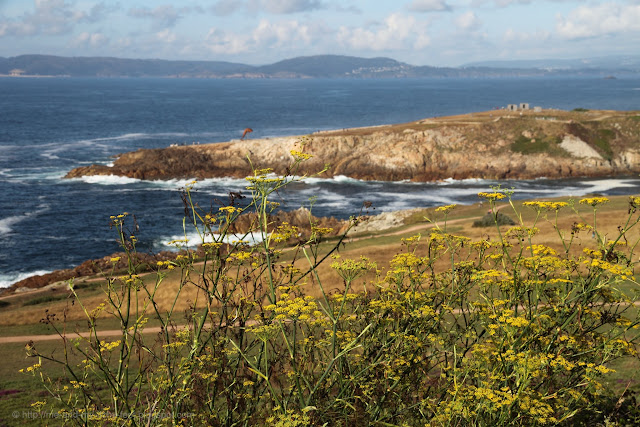Changing our plans a few times on the way, we ended up driving all the way up to the North-Western part of Spain. About 150km before the our next stop, the sky started to clear. When we finally got to La Coruna, ate dinner and decided to see the town, the sky was blue, the sun was shining, which made a perfect afternoon after such a long day.
La Coruna, a city a bit off the regular tourist routes in Spain, is famous for Torre de Hercules. Tower of Hercules, as named in English, is the oldest still functioning lighthouse in the world. Reconstructed a few times since Roman times, it still plays its initial role, that is guiding vessels along the Spanish coast.
As most of the things-to-see in La Coruna, it is situated on an island. That particular one (the only one we've seen) is full of narrow, one-way, crowded streets, so getting there was a bit of a pain. Plus, we had to spend some time waiting to be able to get into the tower. They only let in a limited number of people at once. So you can get inside only when somebody else has just left the building.
The lighthouse is in pretty good shape. Steps are in good condition, mostly regular in height. We've climbed much worse (oh, Florence!). Paulinka managed to get all the way up and then down all by herself. I know she has a lot of energy and is not that easily discouraged once she's set her eyes on something, but she is only three.
When you finally get inside, first you can get acquainted with the history of the tower. Every now and then, there are very informative illustrations of what the tower looks or used to look like. How it is constructed. How it used to or is working. Again, a lot of information given in three languages: Spanish, English and (I'm guessing here) Galician. Once you know all that, you can climb the stairs.
The view from the tower was worth the wait. We got there close to sunset, so the yellowish colours added a bit to my perception of the place, for sure. But the area is simply beautiful. And when you stand right next to the tower, looking at the sea, the waves, you can almost forget that right behind you is the city.














































